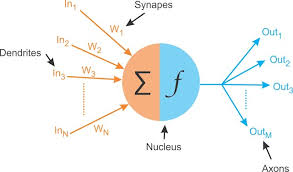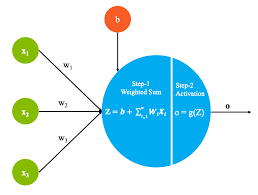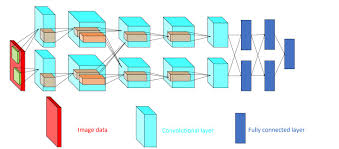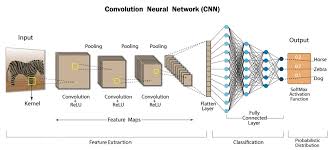Understanding Deep Learning Neurons
Deep learning has become a cornerstone of modern artificial intelligence, powering advancements in fields ranging from computer vision to natural language processing. At the heart of deep learning are neurons, the fundamental building blocks of neural networks. This article delves into what deep learning neurons are and how they function within a neural network.
What is a Neuron in Deep Learning?
A neuron in deep learning is inspired by the biological neurons found in the human brain. It serves as a computational unit that processes input data and produces an output. In a neural network, these neurons are organized into layers: input layers, hidden layers, and output layers.
The primary function of a neuron is to receive one or more inputs, apply a set of weights to them, sum them up, and then pass this sum through an activation function to produce an output. This process allows the network to learn complex patterns and make predictions.
Components of a Neuron
- Inputs: These are the data points or features fed into the neuron.
- Weights: Each input is assigned a weight that signifies its importance in determining the neuron’s output.
- Bias: A bias term is added to the weighted sum of inputs to allow for more flexible modeling.
- Activation Function: This function introduces non-linearity into the model, enabling it to learn complex patterns. Common activation functions include ReLU (Rectified Linear Unit), sigmoid, and tanh.
The Role of Activation Functions
The activation function plays a crucial role in deep learning neurons by introducing non-linear transformations. Without these functions, no matter how many layers are stacked together, the entire network would behave like a single-layer perceptron due to linearity. Activation functions allow networks to approximate complex functions and solve intricate problems.
ReLU (Rectified Linear Unit), one of the most popular activation functions today, outputs zero for any negative input and outputs its own value for any positive input. Its simplicity and efficiency make it ideal for many applications.
The Training Process
The training process involves adjusting the weights and biases within each neuron so that the network can accurately map inputs to desired outputs. This adjustment is typically done using an algorithm called backpropagation along with an optimization technique like gradient descent.
The goal during training is to minimize a loss function that measures how far off predictions are from actual results. As training progresses, neurons adjust their parameters through numerous iterations until they reach optimal values that yield accurate predictions on new data.
Conclusion
Deep learning neurons are integral components that enable neural networks to learn from data effectively. By understanding their structure and function—inputs, weights, biases—and leveraging activation functions appropriately—neural networks can model complex relationships within data sets efficiently.
This foundational understanding helps unlock deeper insights into how artificial intelligence systems operate today—and what potential developments lie ahead as technology continues evolving rapidly across diverse domains worldwide!
Understanding Deep Learning Neurons: Key Questions and Answers
- What is a deep learning neuron?
- How does a neuron function in deep learning?
- What are the components of a deep learning neuron?
- What is the role of activation functions in deep learning neurons?
- How do neurons learn in a neural network?
- What is backpropagation and its role in training neurons?
- Why are weights and biases important in deep learning neurons?
- Can you explain the concept of gradient descent in relation to training neurons?
- How do deep learning neurons contribute to artificial intelligence applications?
What is a deep learning neuron?
A deep learning neuron is a fundamental unit within a neural network that mimics the behavior of biological neurons in the human brain. It processes input data by assigning weights to the inputs, summing them up, and passing the result through an activation function to produce an output. Deep learning neurons play a crucial role in learning complex patterns and making predictions in various applications such as computer vision, natural language processing, and more. By understanding the function and structure of deep learning neurons, we can grasp how neural networks operate and leverage their capabilities to solve intricate problems efficiently.
How does a neuron function in deep learning?
In deep learning, a neuron functions as a computational unit within a neural network, mimicking the behavior of biological neurons in the human brain. The neuron receives input data, applies weights to these inputs to signify their importance, sums them up along with a bias term, and then passes this sum through an activation function to produce an output. This process allows the neuron to learn complex patterns and make predictions based on the input data it receives. By adjusting the weights and biases through training using techniques like backpropagation and optimization algorithms, the neuron refines its parameters to accurately map inputs to desired outputs, ultimately enabling the neural network to learn from data and make informed decisions.
What are the components of a deep learning neuron?
The components of a deep learning neuron include inputs, weights, biases, and an activation function. Inputs are the data points or features that are fed into the neuron for processing. Each input is associated with a weight, which signifies its importance in determining the neuron’s output. A bias term is added to the weighted sum of inputs to allow for more flexible modeling. The activation function introduces non-linearity into the model, enabling the neuron to learn complex patterns and make predictions. These components work together within a neural network to process information and produce meaningful outputs based on the input data.
What is the role of activation functions in deep learning neurons?
Activation functions play a crucial role in deep learning neurons by introducing non-linear transformations to the data processed within a neural network. These functions are essential because they enable the network to learn complex patterns and relationships in the data. Without activation functions, the network would behave like a linear model, limiting its ability to capture intricate patterns and make accurate predictions. Activation functions such as ReLU (Rectified Linear Unit), sigmoid, and tanh introduce non-linearity, allowing the network to approximate complex functions and solve challenging problems effectively. In essence, activation functions help deep learning neurons to model and understand the complexities of real-world data by adding flexibility and depth to the network’s computations.
How do neurons learn in a neural network?
In a neural network, neurons learn through a process known as training. During training, the network adjusts the weights and biases associated with each neuron based on the input data and expected output. This adjustment is typically done using an algorithm called backpropagation, which calculates the gradient of the loss function with respect to each parameter. By iteratively updating the weights and biases in the direction that minimizes the loss function, neurons learn to make more accurate predictions over time. Through this iterative process of adjusting parameters and optimizing performance, neural networks can effectively learn complex patterns and relationships within data sets, enabling them to generalize well to new, unseen data.
What is backpropagation and its role in training neurons?
Backpropagation is a key concept in deep learning that plays a crucial role in training neurons within a neural network. It is an algorithm used to adjust the weights and biases of neurons by propagating the error backward through the network. During training, backpropagation calculates the gradient of the loss function with respect to each parameter in the network, allowing for incremental updates that minimize prediction errors. By iteratively fine-tuning these parameters based on the calculated gradients, backpropagation enables neurons to learn from data and improve their ability to make accurate predictions over time. This iterative process of adjusting weights and biases through backpropagation forms the foundation for training neural networks effectively and unlocking their potential in solving complex problems.
Why are weights and biases important in deep learning neurons?
In deep learning neurons, weights and biases play a crucial role in shaping the behavior and learning capabilities of neural networks. The weights assigned to each input determine the significance of that input in influencing the neuron’s output, allowing the network to learn and adapt to complex patterns within data. Biases provide neurons with additional flexibility by allowing them to shift and fine-tune their responses, enabling more accurate predictions and better generalization to unseen data. Together, weights and biases are essential components that help deep learning neurons effectively model intricate relationships in data sets, ultimately enhancing the network’s ability to learn and make informed decisions.
Can you explain the concept of gradient descent in relation to training neurons?
In deep learning, the concept of gradient descent plays a crucial role in training neurons within a neural network. Gradient descent is an optimization algorithm that aims to minimize the loss function by adjusting the weights and biases of neurons iteratively. When training neurons, gradient descent calculates the gradient of the loss function with respect to each parameter and updates them in the opposite direction of the gradient to reach a local minimum. This iterative process allows neurons to learn from data by fine-tuning their parameters, improving their ability to make accurate predictions and model complex relationships within the input data.
How do deep learning neurons contribute to artificial intelligence applications?
Deep learning neurons are pivotal to artificial intelligence applications because they enable neural networks to learn and model complex patterns within data. By mimicking the way human brain neurons process information, these artificial neurons can handle large volumes of structured and unstructured data, making them ideal for tasks such as image recognition, natural language processing, and autonomous driving. Each neuron processes inputs by applying weights and biases, then transforms the result through an activation function to introduce non-linearity. This allows neural networks to capture intricate relationships in the data. As a result, deep learning models can make accurate predictions and decisions, significantly enhancing AI capabilities across various fields such as healthcare diagnostics, financial forecasting, and personalized recommendations.




